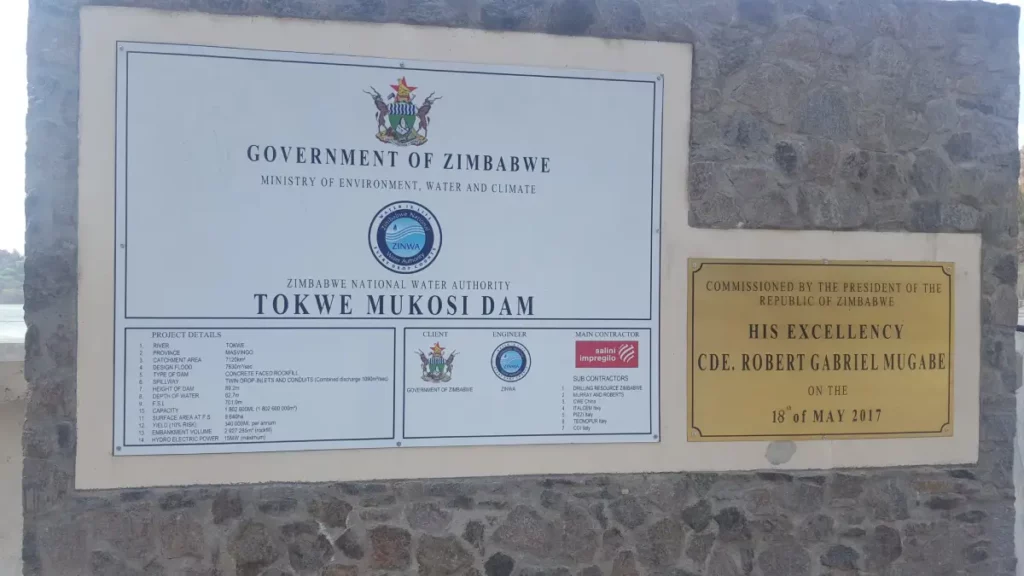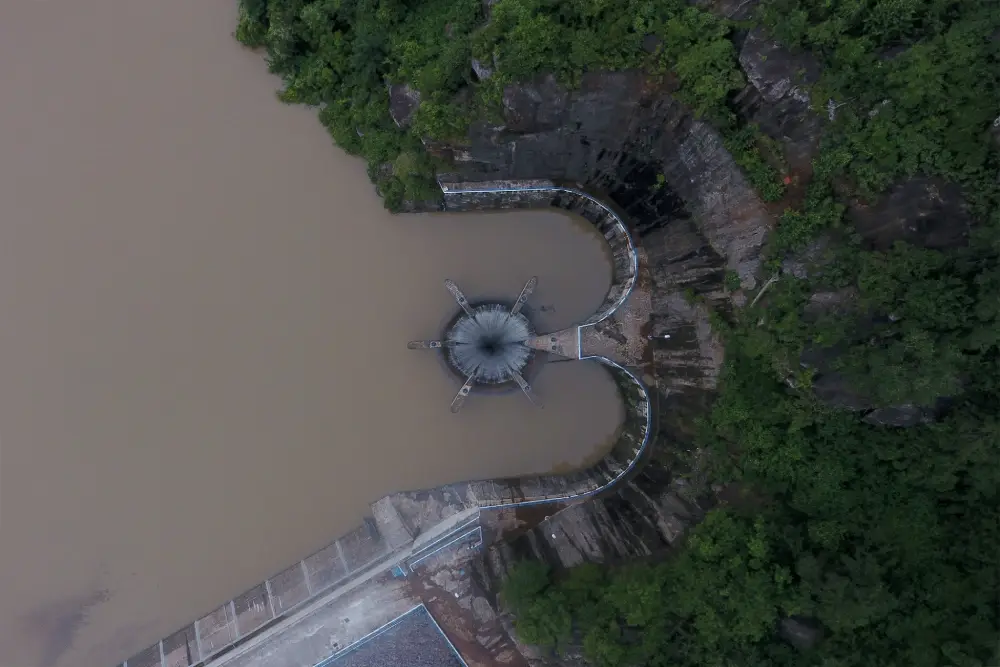Facts About Tugwi Mukosi Dam
The construction of the dam was a strategic project for Masvingo province because 90 percent of the people in the province depend on agriculture.
The buffer zones of the dam were earmarked for the development of fisheries and recreation facilities.
Such activities were to improve the livelihoods of the local people. Irrigation-related activities were meant to create employment for many.

Frequently Asked Questions about Tugwi Mukosi Dam
When Was the Tugwi Mukosi Dam Officially Opened?
Tugwi Mukosi Dam was officially opened on 18 May 2017 by the late former president of Zimbabwe, Robert Gabriel Mugabe.
Who Funded the Tugwi Mukosi Dam Project?
The Tokwe Mukosi dam project was funded by the Government of Zimbabwe and the Infrastructure development bank of Zimbabwe (IDBZ) was responsible for the control and disbursement of funds to the contractor according to project milestones.
Who Built the Tugwi Mukosi Dam?
Salini Impregilo, an Italian construction company was the main contractor partnering in building Tugwi Mukosi Dam.
Subcontractors
- China International Water and Electric Company were subcontracted to take care of earthworks on saddle dams.
- Masimba Holdings was subcontracted for some concrete and masonry works.
- KW Blasting was subcontracted for blasting and grouting.
How Much Did It Cost to Build the Tugwi Mukosi Dam?
According to the IDBZ, the total cost of the Tokwe Mukosi Dam Project was two hundred and eighty-five million United States dollars (USD 285 000 000).
What is the history of Tugwi Mukosi Dam?
The history of Tugwi Mukosi Dam is as follows:
- Construction on the dam began in June 1998 to provide irrigation water and electricity to the sugar cane estates and communal farmers of the province.
- The Italian firm Salini Impregilo was contracted to conduct the civil works, but the progress stalled repeatedly due to funding shortages.
- The construction was finished by Salini Impregilo in 2011, but heavy flooding in February 2014 caused a partial failure on the downstream face of the dam.
- The dam was not fully breached, but the rising reservoir behind the dam caused evacuations upstream and downstream, affecting over 20,000 people.
- Construction of the dam was suspended in June 2014 due to a lack of funding.
- In May 2016, the government released $35 million to Salini Impregilo to resume construction work.
- The dam was eventually completed in December 2016 and commissioned in May 2017.
- The dam is the largest inland dam in Zimbabwe, and it has a 12 megawatts installed capacity for power generation. It also offers a variety of activities for tourism and recreation.
How does the Tugwi Mukosi dam benefit local communities?
Tugwi Mukosi Dam benefits the local communities in many ways, such as:
- Providing water to irrigate an estimated 25,000 hectares of land in the southeast Lowveld, will enable the production of food and cash crops.
- Supplying water for domestic use, such as laundry, bathing, dishes, and gardening. This will reduce the burden of walking long distances to access water and improve the hygiene and health of the people.
- Power generation of 6-15 megawatts of electricity, which will complement the electricity supply and enable rural electrification. This will improve the quality of life and stimulate economic development and investment in the region.
- Boosting livestock production and fisheries, which will provide a source of income and food for the local farmers. With a consistent water supply, healthier livestock and fish can be raised and expanded.
- Tourism activities, such as site seeing, fishing, and boat cruising, will create an alternative source of income and attract visitors to the area. The dam is a scenic attraction that offers a variety of recreational opportunities.

Construction Milestones for Tugwi Mukosi Dam?
Learn more about the Tugwi Mukosi Dam construction milestones.